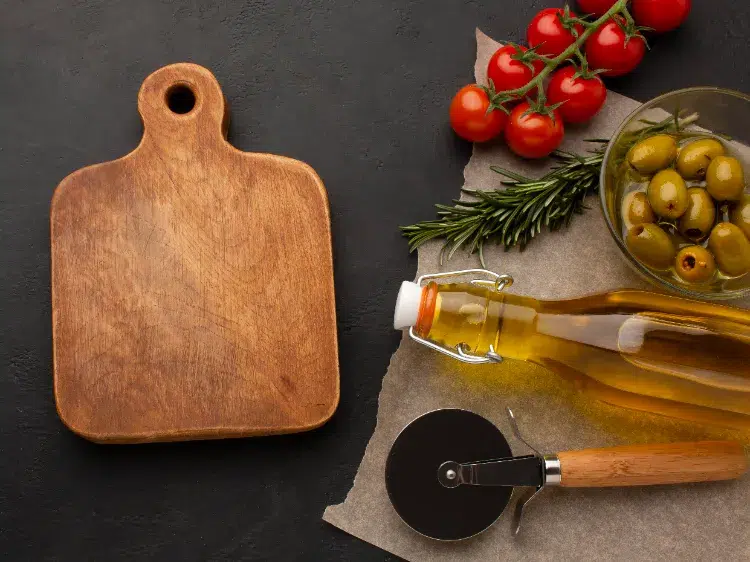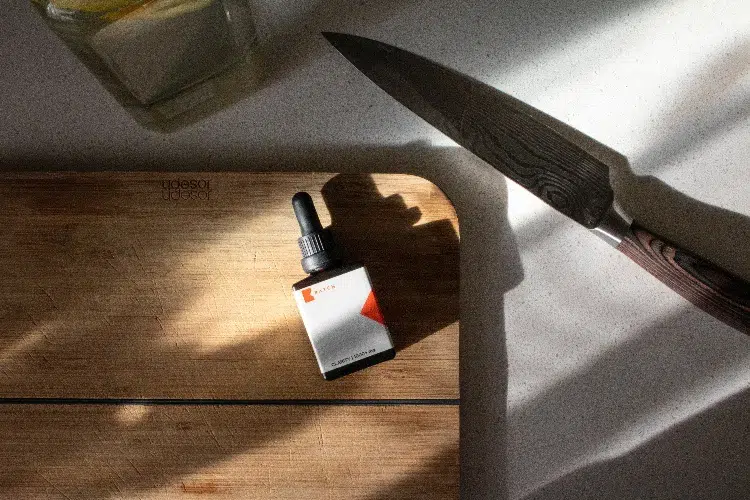Wooden cutting boards are super useful kitchen items and definitely more attractive than their plastic counterparts. However, you do need to know how to maintain them properly, so you can enjoy their use for a long time. So how do you oil a cutting board? What oil to use and how to apply it?
How to Oil a Cutting Board?
Many people use plastic cutting boards, but let’s be honest, it’s neither an aesthetic option nor more hygienic than the alternative. Yes, scientific research has shown that, contrary to widely held beliefs, wood does not retain more bacteria than plastic, despite its porous nature. In fact, it’s the other way around. Additionally, wooden or bamboo cutting boards dull knives less. The problem? These utensils require a certain amount of maintenance to remain practical and attractive year after year.
An Accessory That Improves Over Time
Plastic cutting boards always get uglier over time as they become stained and abused. Eventually, you have to throw them in the trash and replace them, which isn’t exactly eco-friendly either. At the same time, a well-maintained wooden cutting board can last 10 years or more, and it only gets more beautiful with time. It can also be used to serve certain foods directly, which gives the ingredients a warm and rustic appearance.
A Few Words About Daily Maintenance
The only disadvantage of wood is that you need to oil a cutting board regularly to maximize its longevity and make it less likely to absorb bacteria. The good news? It’s actually not that difficult or unpleasant of an activity. Obviously, we must pay attention to daily maintenance as well, but this is valid for all utensils. In this vein, wooden cutting boards should never be soaked in water, as there is a risk of deformation and cracking. The same goes for other kitchen items made of wood or bamboo. After using them, simply wash them in warm soapy water, rinse and let them dry.
Tip: From time to time, you can make a lemon and salt scrub to deeply clean the wooden boards and deodorize them.
How Often Should You Oil Wooden Kitchen Items?
When to oil a bamboo cutting board, wooden spoon, etc. depends on how often you use them. Once a month or once every two months is usually sufficient, but even if you only do it 2 or 3 times during the year, you probably won’t have any problems.
Also read: How to Clean Wooden Spoons Effectively? Learn How to Deep Clean and Get Rid of Odours Naturally!
What Oil to Treat a Cutting Board?
The oil you should use to oil a cutting board or wooden utensil should not be subject to rancidity and should be food grade. That is, the fat must either be safe for human consumption or it can come into direct contact with food products without risk. So, although they are edible, vegetable oils from olives, coconut, rapeseed, etc. are not suitable for oiling a cutting board as they can go rancid.
Mineral oil is a popular and inexpensive choice for oiling a wooden or bamboo cutting board. In addition, it can be easily found in kitchen supply stores, even online. For a better result, you can add a little natural beeswax. There are also special cutting board waxes and oils, but they are usually a little more expensive.
How to Oil a Cutting Board from Wood?
Before you begin, make sure your board is completely clean and dry. Also take into account that you must leave the oil on for a long time. For example, you can apply it at night before bed and wipe it off the next morning to remove any excess oil. You will need two clean soft cloths or paper towels and some mineral oil or special wax.
Using the cloth, apply the oil in an even layer to the wood, rubbing it gently. Let the oil soak into the board overnight, if possible, or for at least a few hours. Finally, remove excess oil using a clean, dry cloth or paper towel, so that the board is neither wet nor sticky. All done!






